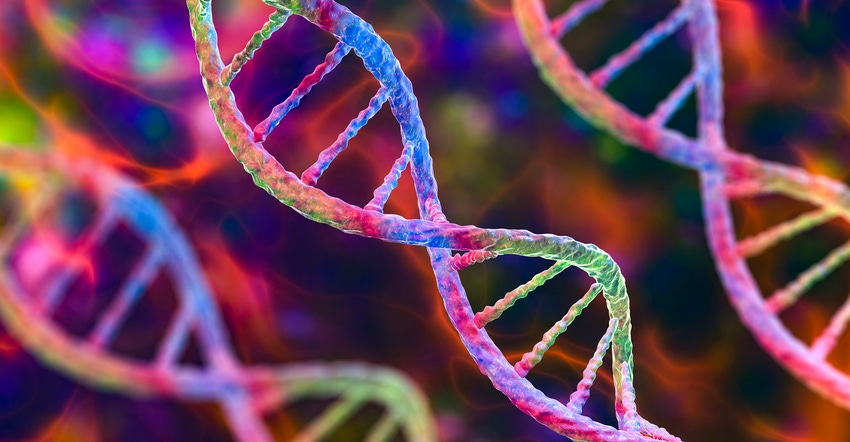June 14, 2022

There was a time when crop protection companies would tout their active ingredient efforts and show off labs to visiting media. These often-automated labs would sample and test up to 50,000 molecules or more every year.
Enko, a crop health company, takes a different approach by working with DNA libraries of pests and plants to design new products. In its efforts, the company can sample billions of options a year, and that effort is expanding.
The company announced it has acquired DNA-encoded libraries and technology enablement from X-Chem, a drug discovery service company.
“It’s the license rights and the physical asset of their latest DNA-encoded library technology,” says Jacqueline Heard, CEO and founder of Enko. “It’s the latest generation of library and still involves billions of compounds.”
And Enko is the first company to internalize this technology for ag applications. Bringing that library in-house gives Enko the ability to integrate the data into its platform. Enko has created a system that can analyze that massive DNA data using machine learning to find compounds more highly targeted to specific pests and diseases.
For farmers, the benefit of Enko’s approach is bringing more effective products to market faster. Enko is already working with Bayer, Syngenta and Nufarm on compounds. This approach of designing a product using DNA information as a target is more precise than the conventional screening method popular in the past.
Another benefit is added safety. “We target safety from the start,” Heard says.
She adds this is important, because in the conventional molecule discovery process, selection is aimed at effectiveness against a target pest, and then safety testing often begins. This can create surprises that disrupt development or even keep a molecule from proceeding to market if it fails safety testing.
“And you find out way too far in the future because it’s a random walk to get to that starting point,” she explains. “We are very targeted from the get-go and know safety right out of the gate.”
The effort is paying off. “One of our new chemistries is like five-thousandfold more selective for the pest target than any commercial benchmarks for a particular mode of action,” she notes.
Working under confidentiality agreements, she can’t share what that mode of action is, but it shows that the Enko approach to designing new products has merit.
New libraries, more opportunity
Any discovery process is only as good as the information available. Adding the X-Chem library will rapidly increase Enko’s capabilities, Heard says. The key is using that massive data set in conjunction with its Enkompass platform, which combines DNA-encoded library screening with machine learning and structure-based design to find novel chemistry and new modes of action to control crop pests and diseases.
“Diversity is the foundation and essential building block for innovation in the drug design space, and our farmers need it more than ever,” Heard says. “Owning these libraries from X-Chem gives us more flexibility to explore the chemical universe and predict which molecule will be right for a specific crop threat.”
For example, Enko can fine-tune screens to focus on a new structure that targets pest insect enzymes without harming bees. “This is similar to how researchers have tailored cancer drugs to kill cancer cells without affecting others,” she adds.
Regarding DNA, Enko has amassed a library of genetic information for key crops like corn, soybeans, rice and cotton. In addition, those libraries contain genetic information about key pests from corn rootworm to tar spot and other targets. With that information, the company can design targeted tools that are very specific to the pest. Hence, that five-thousandfold increase in selectivity, Heard notes.
“At the World Economic Forum, they talk about the fourth industrial revolution, where you have this integration of innovation across data science,” she says. “But it’s not just the digital transformation, but also in material science and biology, which is genomics.”
She adds that the power of Enko having access to those pest and crop genomes allows the company to find the right targets and design products that hit those targets. “I think we really epitomize that application of the fourth industrial revolution, and it’s around data,” she adds.
Heard explains that X-Chem was focused on pharmaceutical development, not agriculture, offering an opportunity for Enko to expand its libraries. You can learn more about Enko at enkochem.com.
About the Author(s)
You May Also Like






